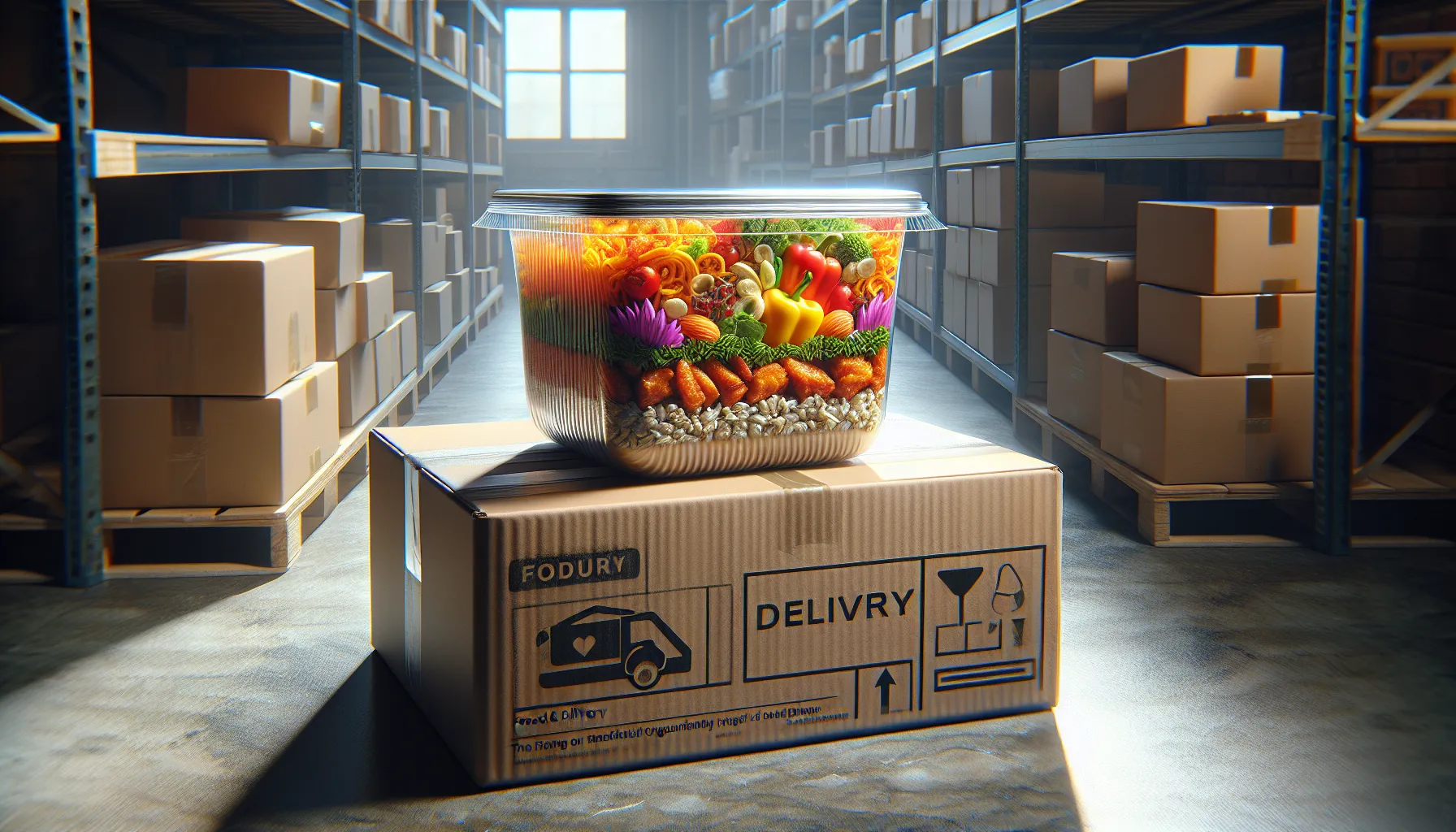Key Takeaways
- Proper food delivery packaging ensures meals remain fresh, safe, and visually appealing while maintaining the intended temperature during transit.
- Choosing sustainable materials like biodegradable or recyclable containers appeals to eco-conscious customers and enhances brand reputation.
- Leak-proof and insulated packaging prevents spills, maintains food quality, and ensures items arrive in perfect condition.
- Incorporating branded designs, convenient closures, and reusable packaging can elevate the customer experience and increase loyalty.
- Cost-effective packaging solutions, such as bulk purchasing and multi-purpose containers, help streamline operations and reduce expenses without compromising quality.
- Thoughtful packaging shows attention to detail and care, creating a lasting positive impression on customers.
Delivering food isn’t just about getting it from point A to point B—it’s about ensuring it arrives fresh, tasty, and looking as good as it did when it left the kitchen. I’ve seen how the right packaging can make or break the customer experience, and trust me, it’s worth getting it right.
From keeping soups spill-free to making sure fries stay crispy, there’s a lot to consider when it comes to food delivery packaging. It’s not just about practicality; it’s about showing customers you care about every detail. Let’s dive into some simple yet effective tips that’ll elevate your packaging game and keep customers coming back for more.
Importance Of Proper Packaging In Food Delivery
Proper packaging plays a critical role in keeping food fresh, safe, and visually appealing during transit. It ensures meals maintain their intended temperature, whether hot or cold, which directly impacts taste and satisfaction. Leak-proof containers, for example, prevent messy spills that can ruin a customer’s experience before they even take their first bite.
Packaging also protects food from external factors like dust, moisture, and contamination during delivery. Well-sealed items, such as wrapped sandwiches and covered soups, demonstrate a commitment to hygiene and quality.
Using appropriate materials helps reinforce your brand image. Eco-friendly packaging options, like biodegradable or compostable containers, appeal to environmentally conscious customers and reflect positively on your business.
Structural integrity is another key factor. Sturdy packaging, such as insulated boxes for pizza or durable clamshells for salads, prevents damage during transportation, ensuring the food arrives looking just as it was prepared.
Choosing The Right Packaging Materials

The right packaging materials keep food fresh, safe, and visually appealing. Choosing options that align with customer preferences and operational needs ensures meals arrive in perfect condition.
Sustainable And Eco-Friendly Options
Using eco-friendly materials shows commitment to sustainability. Compostable containers, biodegradable packaging, and recyclable materials reduce environmental impact. For instance, paper-based boxes, plant-based utensils, and reusable bags appeal to eco-conscious customers while maintaining food quality. Selecting non-toxic inks for branding enhances packaging sustainability.
Insulated And Temperature-Controlled Choices
Temperature-controlled packaging keeps hot foods warm and cold items chilled during delivery. Insulated bags, aluminum-lined boxes, and gel packs ensure food maintains its intended temperature. For example, foil containers work well for hot dishes, while insulated pouches keep frozen desserts intact. These materials help preserve food quality and customer satisfaction.
Ensuring Freshness And Quality

Freshness and quality define a successful food delivery experience. Ensuring meals arrive intact and at the right temperature enhances customer satisfaction.
Preventing Spills And Leaks
I prioritize secure and leak-proof packaging to avoid spillage during transit. Using tight-fitting lids for soups or sauces, sealing containers with tamper-evident seals, and adding an extra protective layer like a resealable bag for liquid items keeps food contained. For greasy or wet foods like fried items or salads with dressings, I include an absorbent liner to prevent soggy containers and leaks. Effective sealing shows customers that their food is handled with care.
Maintaining Proper Portion Sizes
Consistent portion sizes protect quality by preventing overpacking or underpacking. I use portion-specific containers, like small boxes for side dishes or large ones for main courses, to ensure the food isn’t overcrowded or requires excessive empty space. This also helps prevent food movement or crushing while keeping its presentation intact. Clear size distinctions make packaging efficient and align delivery with customer expectations.
Enhancing Customer Experience

Delivering a memorable unboxing experience can make food delivery more enjoyable and leave customers impressed. Thoughtful packaging design creates positive associations and strengthens brand loyalty.
Branding Through Packaging
Custom packaging strengthens brand identity by making it recognizable and unique. Adding logos, brand colors, or memorable taglines helps create a visual connection while reinforcing the business’s professionalism. For example, I recommend including branded stickers, well-designed inserts, or thank-you cards to show appreciation. This subtle effort adds personality and improves customer perception.
Easy-To-Open And Reusable Designs
Convenient, customer-friendly designs can elevate the overall experience. Packaging that’s easy to open prevents frustration, especially during rushed meals. For instance, I might use tabbed closures, perforated seals, or resealable tops for added convenience. Reusable or multi-purpose containers—like microwave-safe bowls or sturdy delivery bags—offer extra value while demonstrating environmental consciousness. This practicality ensures packaging feels thoughtful rather than disposable.
Cost-Effective Packaging Solutions
Reducing costs without compromising quality is possible with smart packaging choices. Lightweight materials like paperboard and corrugated cardboard reduce shipping expenses while offering durability. These materials protect food and keep costs under control.
Buying packaging in bulk lowers per-unit costs. I recommend working with suppliers who offer discounts for large orders, especially for items like standard-sized containers or liners commonly used in deliveries.
Reusable packaging options, such as plastic containers or insulated bags, can lead to long-term savings. Though the initial investment is higher, these options reduce recurring costs and align with sustainability goals, appealing to eco-conscious customers.
Multi-purpose packaging minimizes waste and expense. For example, using containers that work for both hot and cold items simplifies inventory management and reduces the need for extra packaging types.
Branding directly on packaging during manufacturing is a budget-friendly way to enhance customer experience without needing separate labels or wraps later.
Conclusion
Packaging plays a vital role in shaping the food delivery experience, and small adjustments can make a big difference. By focusing on quality, sustainability, and thoughtful design, you can ensure your meals arrive fresh, intact, and memorable for all the right reasons.
When you invest in smart packaging choices, you’re not just protecting the food—you’re building trust and loyalty with your customers. It’s all about creating a seamless experience that keeps them coming back for more.
Frequently Asked Questions
Why is food delivery packaging important?
Proper food delivery packaging ensures meals arrive fresh, appealing, and intact. It prevents spills, protects food from contamination, and maintains the intended temperature, directly impacting customer satisfaction and the overall dining experience.
How does packaging maintain food freshness during delivery?
Insulated packaging and tight seals help retain food temperature while protecting meals from dust, moisture, and contamination. Leak-proof designs and portion-specific containers also prevent spills and maintain optimal presentation.
Are eco-friendly packaging materials effective?
Yes, sustainable options like compostable containers and recyclable materials are highly effective. They not only reduce environmental impact but also appeal to eco-conscious customers, enhancing brand perception.
What features make packaging secure and reliable?
Secure packaging includes sturdy materials, leak-proof containers, tamper-evident seals, and tight-fitting lids. These features prevent spills, damage, and contamination during transit, ensuring meals remain intact and high-quality.
How can businesses improve packaging design to enhance customer experience?
Custom packaging with logos, brand colors, and thank-you cards reinforces brand identity. Easy-to-open designs and reusable containers like microwave-safe or tabbed-closure options improve convenience and customer satisfaction.
What are cost-effective packaging solutions for food delivery?
Use lightweight materials like paperboard or cardboard to lower shipping costs and buy packaging in bulk to save money. Reusable or multi-purpose designs reduce waste while streamlining inventory management.
How does branded packaging improve customer loyalty?
Branded packaging creates a memorable experience by reinforcing brand identity. Using logos, colors, and thoughtful designs helps build positive associations, strengthen customer loyalty, and enhance overall satisfaction.
Why is structural integrity important in food delivery packaging?
Sturdy materials prevent packaging from collapsing or leaking during transportation. This ensures food remains intact, reducing customer complaints and improving the overall delivery experience.
Can packaging influence portion control?
Yes, portion-specific containers help maintain proper serving sizes, prevent overcrowding, and preserve the food’s presentation. This aligns with customer expectations and contributes to a visually appealing delivery.
What are the best materials for insulated food delivery packaging?
For temperature-controlled packaging, materials like aluminum foil insulation, foam liners, or thermal bags are ideal. They keep hot foods warm and cold foods cold, preserving quality during transit.

